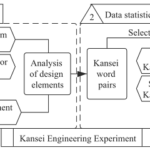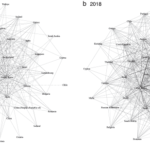
Creativity in the workplace is a valuable resource that can have a significant impact on interpersonal relationships and the dynamics of an organization.
We work with coworkers every day to help us solve problems. For instance, we may exchange ideas when analyzing ways to increase revenue or when launching a new product or service. As we develop closer relationships with colleagues, we may notice a coworker who often thinks outside the box or is always brimming with ideas to help improve the organization. You might even be the person with all the ideas.
A recent study examined the influence of coworkers’ creativity on work relationships and discovered something interesting: participants sought a closer relationship with coworkers they perceived as more creative. Furthermore, subjects were more inclined to establish a closer relationship with a creative coworker of the opposite sex or from a different demographic group than themselves.
The study explored an intriguing concept: the “perception of a coworker’s creativity” as a resource that people seek to acquire through their professional relationships.
Researchers Christina E. Shalley, Sharon M. and Matthew R. Price, President and Professor of Organizational Behavior at the Georgia Tech Scheller College of Business; Amy P. Breidenthal, Assistant Professor of Business Management at Agnes Scott College; and Gamze Koseoglu, Senior Lecturer in Management at The University of Melbourne, examined whether the number and strength of relationships with a creative coworker increased over time as more colleagues sought them out.
They will also examine the role of gender and nationality similarity as moderators in this process. To support our hypotheses, the researchers present the findings of three studies: an experimental study with full-time employees, a longitudinal study of full-time employees over 8 weeks, and a longitudinal study with MBA students over 1 year.
Perception of Coworkers’ Creativity
If a creative coworker’s network expanded, the researchers posited that the coworker would also be seen as a high-performing worker and would be granted a more favorable position within the organization, especially if the organization valued and promoted creativity. In other words, in an organization that encouraged creativity, the more relationships coworkers developed with a creative coworker, the more others sought to do the same, thereby expanding the creative individual’s network and their position within the organization.
The perception of a coworker’s creativity emerges as a key factor in the development of strong work relationships. Employees tend to seek and value colleagues who stand out for their creativity, as this quality can bring innovation and solutions to the challenges the organization faces.
Perhaps most surprising is that, among their hypotheses, a creative coworker from a minority group and a different demographic group was seen as more creative and experienced greater popularity within the network. This is due to the perception among coworkers (and in previous research) that minorities and individuals from different demographic groups tend to offer distinctive perspectives, different ways of thinking, and therefore, more significant creative insights.
The Network Theory of Social Capital (NTSC)
The Network Theory of Social Capital (NTSC) provides a valuable lens for understanding how workplace relationships can influence the acquisition of resources like perceived creativity. This theory suggests that relationships within an organization serve as a source of social capital, and access to valuable resources, such as creativity, depends on an individual’s position within the network.
Using the NTSC, the researchers will analyze how the perception of a coworker as creative affects the closeness of the relationship an employee develops with that coworker and how being perceived as creative by others in the organization changes one’s weighted centrality in the organizational network over time.
Impact on Work Relationships
The study’s results revealed that employees tend to develop closer relationships with coworkers they perceive as creative. This positive perception strengthens cohesion and collaboration in the workplace, which, in turn, can drive creativity and innovation within the organization.
“In addition to enhancing relationship opportunities for minority employees, this also provides advantages for majority employees, as they can potentially benefit from learning diverse perspectives and acquiring resources from them,” said Shalley.
According to the study’s findings, creative individuals in the workplace are highly regarded, leading others to work on establishing a closer relationship with these colleagues. Furthermore, when the network of creative employees expands, more opportunities can be offered within an organization, especially if the organization promotes creativity. Additionally, their work suggests that being seen as a creative employee increases confidence in their own abilities and with their coworkers.
Moderators: Gender and Nationality
The research also demonstrated that gender and nationality similarity act as moderators in this process. The perception of a coworker’s creativity is stronger when there are gender or nationality differences among individuals. This suggests that workplace diversity can foster an appreciation of each other’s creativity.
Implications for Human Resource Management
This study sheds light on the importance of recognizing and fostering employees’ creativity within an organization. Promoting gender and nationality diversity can be an effective strategy to increase the perception of creativity among coworkers.
Shalley and her colleagues believe that organizations would do well to encourage creativity in the workplace. The researchers suggest that organizations can achieve this by providing development opportunities that introduce colleagues who may not know each other and encourage them to discuss possible solutions to organizational problems. Holding brainstorming meetings can also promote creativity among workers, as long as organizations ensure that all ideas are treated equally.
“Our findings highlight practical opportunities for both employees and managers to improve close relationships, especially for employees who are different from their coworkers by being creative at work,” said Shalley.
Conclusions
In summary, the perception of a coworker’s creativity is a valuable resource in the workplace that can influence the formation of closer relationships and an individual’s position within the organizational network. Understanding how these factors influence organizational dynamics can be crucial for human resource management and the promotion of innovation in the workplace.
This article offers a fascinating insight into how perceived creativity can play a crucial role in building effective work relationships and strengthening social capital within an organization. These findings provide a compelling argument for considering creativity and diversity as strategic assets in the contemporary workplace.
Contact
Gamze Koseoglu
Department of Management and Marketing, The University of Melbourne
Melbourne, Victoria, Australia.
Email: gamze.koseoglu@unimelb.edu.au
Reference (open access)
Koseoglu, G., Breidenthal, A. P., & Shalley, C. E. (2023). When perceiving a coworker as creative affects social networks over time: A network theory of social capital perspective. Journal of Organizational Behavior, 44(8), 1183–1203. https://doi.org/10.1002/job.2737





